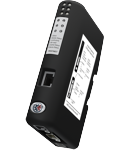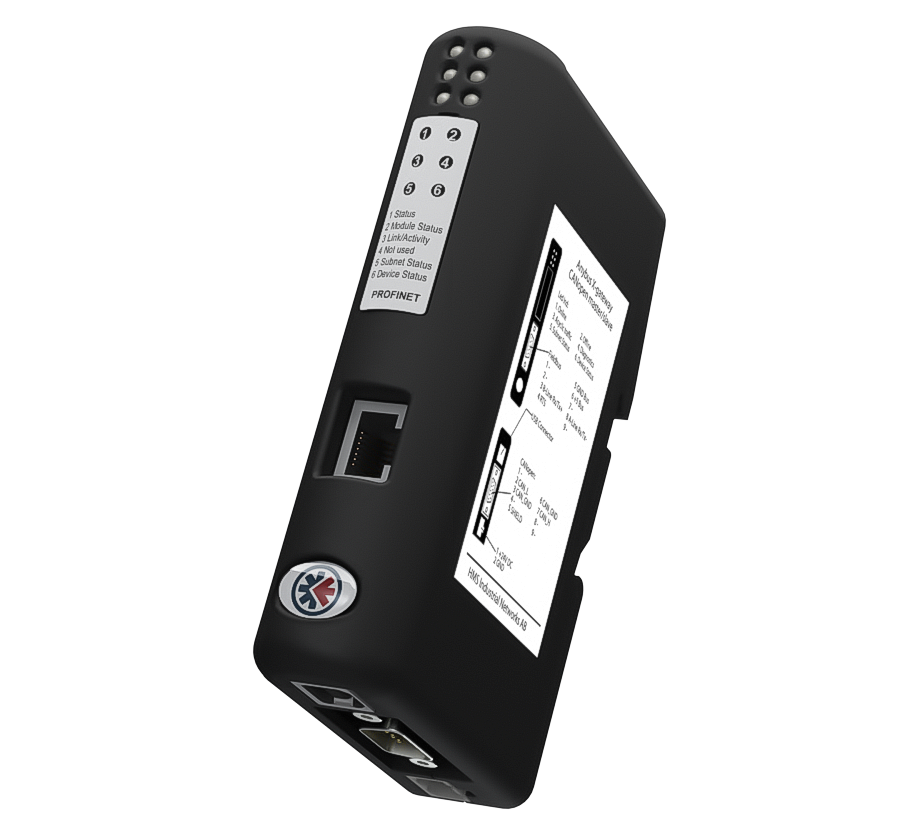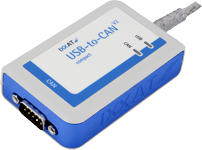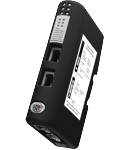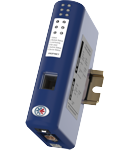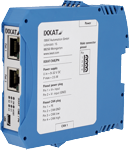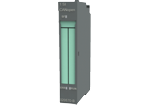CANopen Master - PROFINET IO gateway
Anybus CANopen master/slave to PROFINET slave X-gateway
The gateway acts as a PROFINET-IO slave for the primary network and as a CANopen master or slave for the second network
With help of convenient configuration software it's easy to configure the data exchange bi-directional between both the networks.
Features and benefits
- Fast copying of cyclic I/O data between a CANopen and PROFINET-IO network (5 ms)
- Fulll CANopen Master/Manager functionality, eliminates the need for an PLC controller on the CANopen network
- Connects up to 126 CANopen slave devices
- Proven and tested with all PLC manufacturers
- Easy CANopen configuration via the included Anybus Configuration Manager software. No programming required
- Robust stand-alone housing for use in harsh industrial environments
- Global free technical support and consultancy
- Fast, dynamic transfer of fieldbus data to e.g. SCADA/HMI/Enterprise level systems based on Microsoft Windows, via the included Anybus OPC server
Fast copuing of I/O data
The X-gateway's primary function is fast transfer of cyclic I/O data between the PROFINET-IO and the CANopen network. I/O data from the PROFIBUS network is written into CANopen objects that can be mapped into CANopen PDOs and vice versa. The gateway acts as a full Master/Manager on the CANopen network and as a Slave on the PROFINET-IO network. The data transmission between the two networks is completely transparent with a maximum data capacity of 510 bytes in each direction
Easy configuration - No programming required!
CANopen configuration can easily be made through the included Anybus Configuration Manager CANopen software, or with any other standard CANopen configuration tool. No programming skills are needed.
The Anybus Configuration Manager scans the CANopen devices on the subnet. The software linked to the CAN bus by using a CAN interface which is available separately.
CANopen Master/Manager
- CANopen Master/Manager implementation according to the CANopen specification DS301 v4.0.2.
- Connects up to 126 CANopen slaves
- Network Management (NMT) messages, to configure and initialize the network.
- Supporting 128 Receive PDOs and 128 Transmit PDOs, each can transfer up to 8 bytes.
- Up to 510 bytes of cyclic data in each direction (PDO)
- PDO message types: COS (Change of State), Cyclic Synchronous, Acyclic Synchronous.
- Synchronization Object (SYNC) is used for synchronizing PDO communication.
- Heartbeat Mechanism to monitor the status of nodes.
- Node Guarding/Life Guarding Protocol provides possibility to guard slaves or the master.
- EMCY (Emergency Object) is used for error reporting.
- LSS master functionality
- Can also function as a CANopen Slave
PROFINET-IO Slave interface
- Complete PROFINET-IO Soft-Real-Time (RT) communication
- Max 512 bytes of Input and 512 bytes of Output data
- Up to 64 slots / 1 sub slot
- Cyclic data exchange (10 ms cycle time)
- Acyclic Data exchange (Record Data Requests)
- Baud rate 10/100 Mbit/s
- Integrated FTP server provides easy file management using standard FTP clients
- Web server with dynamic data capability and Server Side Include (SSI) capability
- Email client with dynamic data capability and Event-triggered email handling
- TCP/IP Configuration via DCP (Discovery and Configuration Protocol)
- PROFINET uplink configuration via .GSDML file
| Technische gegevens | |
| Dimensions | 120 x 75 x 27mm |
| Weight | 150g |
| Operating temperature | -25 to +55 °C |
| Storage temperature | -40 to +85 °C |
| Power supply | 24 VDC |
| Current consumption | Typical 150mA |
| Configuration port | USB |
| CAN | |
| Baudrate | 20 kbit/s - 1 Mbit/s |
| Protocol support | CAN 2.0A and 2.0B (11 and 29 bit identifiers) |
| Connector | D-sub 9 Male |
| PROFINET-IO | |
| Connector | 1x RJ45 |
| Galvanic isolation | On both CAN and PROFINET-IO side |
| Protection class | IP20 |
| Mounting | DIN-rail (EN 50022 standard) |
| Certifications | CE, CULUS, ATEX/Haz.Loc, RoHS |
| Contents of delivery |
| - Anybus Communicator CAN-PROFINET-IO |
| - Anybus Configuration Manager (Windows™) |
| - Quick Reference Manual |
| - User Manual |
Part number(s)
